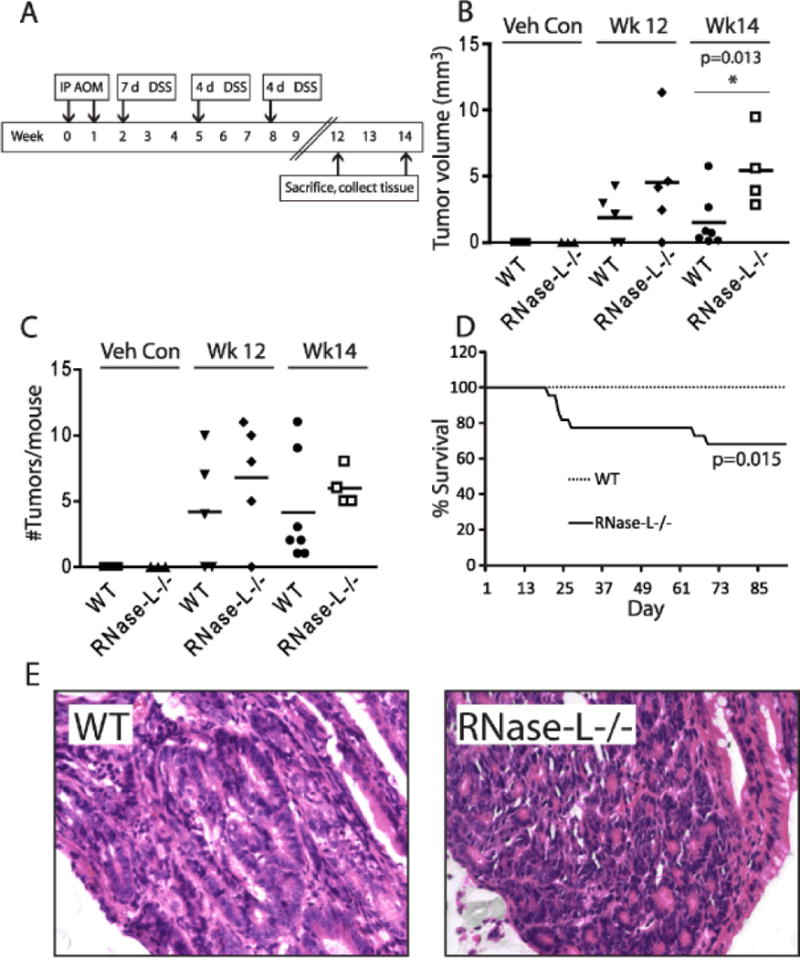Figure 5.

Tumor burden from colitis-associated cancer is increased in RNase-L−/− compared to WT mice. (A) In the treatment regimen, mice were administered 10 mg/kg azoxymethane (AOM) by intraperitoneal (IP) injection followed by three cycles of 2% DSS (WT: n = 21, RNase-L−/−: n = 22). Veh con = sham injection of PBS without AOM and regular water without DSS (WT: n = 8, RNase-L−/−: n = 8). (B) The total tumor burden per mouse was determined using the equation 1/2(Lx2W) as mm3. Significance was determined by Kaplan-Meier analysis. (C) Scatter plot of the number of tumors per mouse colon; bars indicate mean values. (D) Mortality due to DSS/AOM treatment is shown as % survival according to day. Significance was determined by Kaplan-Meier analysis. For tumor number (C) and volume (D), WT DSS/AOM: n = 12, RNase-L−/− DSS/AOM: n = 9, WT and RNase-L−/− sham: n = 3. Data represent means ± SE. *p < 0.05. (E) Histopathological analysis was performed on H&E-stained colon tissue sections from 14 weeks post DSS/AOM-treated mice. 400x images show well-differentiated adenocarcinoma in both WT and RNase-L−/− colon sections.
